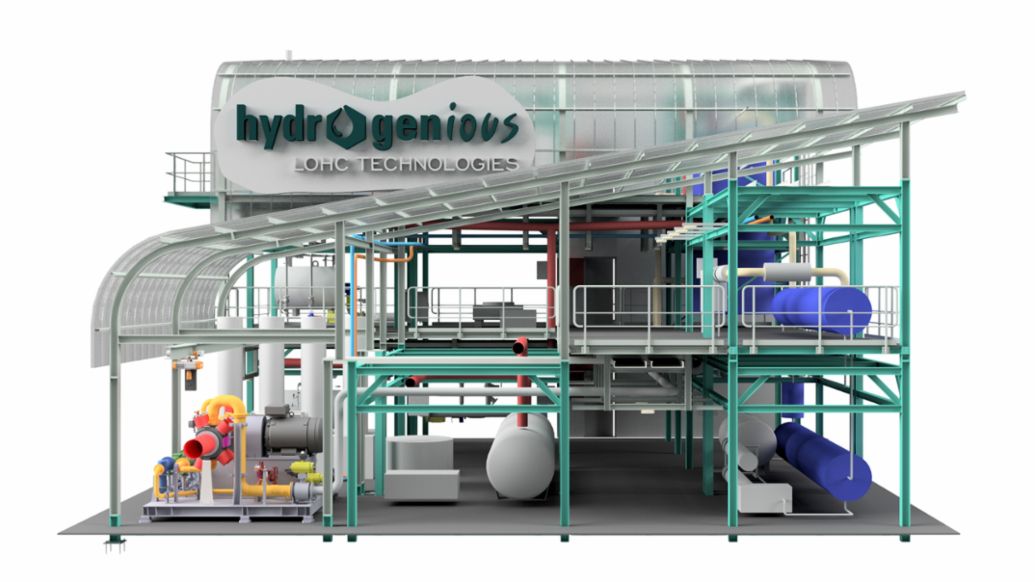Green hydrogen is considered one of the most important components of the energy transition sought the world over. Generated via electrolysis from renewable energies like wind or solar power without emitting greenhouse gases, it will play an essential transformative role in many areas of the economy—from the steel industry to glass production. One challenge is… Continue reading @VW Group: The oil trick with hydrogen003888
Category: OEMRSSCHK
@GM: All-New 2022 Chevy Silverado ZR2 is Race-Proven
All-New 2022 Chevy Silverado ZR2 is Race-Proven Preproduction truck driven by Chad Hall competes in Best In The Desert off-road racing series to validate off-road performance 2021-09-24 LAUGHLIN, Nev. – The first-ever Silverado ZR2, Chevy’s flagship off-road truck, makes its official racing debut in the Best In The Desert King Shocks Laughlin Desert Classic, but… Continue reading @GM: All-New 2022 Chevy Silverado ZR2 is Race-Proven
@GM: GM Invests $300 Million in Momenta to Deliver Next-Generation Self-Driving Technologies in China
GM Invests $300 Million in Momenta to Deliver Next-Generation Self-Driving Technologies in China 2021-09-23 SHANGHAI – General Motors announced today it will invest $300 million in Momenta to accelerate the development of next-generation self-driving technologies for future GM vehicles in China. “Customers in China are embracing electrification and advanced self-driving technology faster than anywhere else… Continue reading @GM: GM Invests $300 Million in Momenta to Deliver Next-Generation Self-Driving Technologies in China
@GM: GM Names David Strickland VP, Global Regulatory Affairs
GM Names David Strickland VP, Global Regulatory Affairs 2021-09-22 DETROIT – General Motors today named David L. Strickland as vice president, Global Regulatory Affairs, effective Oct. 1. Strickland will report to Omar Vargas, GM vice president and head of Global Public Policy. Strickland is currently the staff director of the U.S. Senate Committee on Commerce,… Continue reading @GM: GM Names David Strickland VP, Global Regulatory Affairs
@GM: General Motors and Amazon Team Up to Offer OnStar Emergency Service at Home
General Motors and Amazon Team Up to Offer OnStar Emergency Service at Home New feature, the OnStar Guardian skill for Amazon Alexa, gives customers access to OnStar’s Emergency-Certified Advisors at home through Alexa-enabled devices 2021-09-22 DETROIT – General Motors and Amazon today announced plans to introduce the OnStar Guardian skill for Amazon Alexa1, a new… Continue reading @GM: General Motors and Amazon Team Up to Offer OnStar Emergency Service at Home
@VW Group: First Bugatti Chiron Super Sport 300+ Ready for Launch003886
The first production car to explore a new dimension of straight-line performance was Bugatti’s record-breaking sensation; the Chiron Super Sport 300+1. Having now completed its extensive two-year testing and development program, the first eight of just 30 highly exclusive vehicles are now ready for delivery. When the Chiron Super Sport 300+ first made headlines back… Continue reading @VW Group: First Bugatti Chiron Super Sport 300+ Ready for Launch003886
@VW Group: Sustainability, top employer, and premium quality: AUDI AG board members visit the San José Chiapa plant003886
Audi México was visited by three members of the Board of Management of AUDI AG. The reason for their visit to San José Chiapa was to meet the employees responsible for the smooth operation of the factory, which represents a valuable member of the Audi Group’s production network. Audi México is a benchmark in the… Continue reading @VW Group: Sustainability, top employer, and premium quality: AUDI AG board members visit the San José Chiapa plant003886
@Toyota: TMMWV Celebrates 25 Years, Nearly 20 Million Powertrains Built; Innovation, Advanced Manufacturing to Guide Future Production
Awards $189,000 grant to West Virginia University Institute of Technology for middle school computer science after-school program in four counties BUFFALO, W. Va. (September 22, 2021) – As Toyota Motor Manufacturing West Virginia (TMMWV) celebrates 25 years of producing engines and transmissions, a keen eye is looking down the road at the next quarter century… Continue reading @Toyota: TMMWV Celebrates 25 Years, Nearly 20 Million Powertrains Built; Innovation, Advanced Manufacturing to Guide Future Production
@Toyota: Participation in Japan Automotive Model-Based Engineering Center
Five Japanese automobile manufacturers (SUBARU CORPORATION, TOYOTA MOTOR CORPORATION, Nissan Motor Co., Ltd., Honda Motor Co., Ltd., and Mazda Motor Corporation) and five parts manufacturers (AISIN CORPORATION, JATCO Ltd, DENSO CORPORATION, Panasonic Corporation, and Mitsubishi Electric Corporation) will be filling the role of executive member in the Japan Automotive Model-Based Engineering center (JAMBE), which went… Continue reading @Toyota: Participation in Japan Automotive Model-Based Engineering Center
@Groupe PSA: PR Stellantis and TotalEnergies welcome Mercedes-Benz as a new partner of Automotive Cells Company (ACC) and raise its capacity plan to at least 120 GWh by 2030002530
Paris, 24 September 2021 – Stellantis, TotalEnergies and Mercedes-Benz have entered into agreements to welcome Mercedes-Benz as a new partner of Automotive Cells Company (ACC). Following its entry, the partners commit to increase ACC’s industrial capacity to at least 120 GWh by 2030. The transaction is subject to agreement on definitive documentation and customary closing… Continue reading @Groupe PSA: PR Stellantis and TotalEnergies welcome Mercedes-Benz as a new partner of Automotive Cells Company (ACC) and raise its capacity plan to at least 120 GWh by 2030002530
